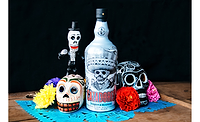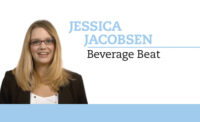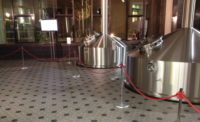Beverage companies, this one’s for you. Now you can get a sense of how to utilize virtual reality (VR) and augmented reality (AR) to help generate a return on investment from your marketing campaign.
Shocking, I know. It’s shocking because, as of right now, headset-based VR is in a bit of a slump. And headset-based AR is either too expensive for consumers or still not available.
Unfortunately, this leads most companies to believe that VR and AR are unimportant issues to worry about in 2017. As an executive for a large-scale beverage company, one can imagine your marketing priorities are as follows:
- Personalizing your content for your target demographic
- Maximizing your brand through the power of storytelling
- Building immersive experiences that delight your customers
Accomplishing these priorities likely has been approached the same way everyone else does in the industry: TV campaigns that no one watches and social media campaigns that completely miss the jab and go straight for the hook. But what if there was another way?
A way that uses disruptive technology that could bring lower margins upfront, but could promise large profits on the backend. A way that could put you ahead of all of your competition and take advantage of the 2.8 billion devices in the world to which we all are addicted.
That way involves combining mobile-based VR (i.e., 360 video), AR and live events into a sweet-tasting cocktail that we’ll call Disruptor’s Paradise.
Using a popular tequila brand as an example, let’s see how we can potentially turn a profit from this strategy.
Step 1 – Sponsor an intimate concert series: Let’s start off with a little drop of honesty. Younger folks hate ads, but they love video content. So, instead of serving up yet another display ad, the tequila brand should orchestrate an intimate VR concert series to offer real value to its more than 4.2 million Facebook fans.
Because a brand is not going to invest millions into a marketing campaign that it hasn’t tried yet, it can start with a small sip of Disruptor’s Paradise by picking three artists. These artists can all be from the same genre of music (e.g., Future, Drake and Chance the Rapper), or span across multiple genres for the highest impact (e.g., Kendrick Lamar, Justin Bieber and Adele). The venue that hosts this event can be a private studio, a nondescript warehouse or a small concert hall, but the idea is to create an intimate setting.
As for the actual programming, there would be three distinct shows. Each artist would come to the venue, begin the session with an interview and end with a performance of three to five songs.
Step 2 – Host the concert series live on Facebook: The tequila brand could run a special contest leading up to the VR concert series that gives people a chance to attend the live session by signing up via email. If the tequila brand gives people more chances to win by sharing the event with their friends across social media, it has just created a viral marketing campaign.
With the help of 360 Designs, the tequila brand could livestream each private concert to Facebook Live 360, which can be seen on smartphones, computers, tablets and VR headsets.
Promotions for the events can either be drawn out with teaser videos and email campaigns, or the tequila brand could drop the mic, like Beyoncé and Drake, and alert people four to 24 hours in advance of each event. Depending on the marketing campaign, the size of the tequila brand’s audience and the size of the artists’ audience with whom it works, the tequila brand easily can get millions of impressions from the VR concert series.
Step 3 – Drive sales through VOD content: Here’s where it gets fun. After each livestream is finished, the tequila brand could take the content completely off of Facebook and transfer the video assets to a special app. The content on this special app can only be unlocked by scanning a bottle of the brand’s tequila.
Instead of being at the whims of Facebook’s next algorithm, the tequila brand owns the distribution. Instead of fighting for eyeballs with the millions of other videos that can be seen on Facebook, the tequila brand can draw those eyeballs to its own exclusive platform.
And instead of trying to measure a social media campaign by impressions and engagement, the brand can track exactly how this campaign leads to direct sales of its product.
The brand can alert consumers about the exclusive content once the whole series is complete, potentially driving people to their local supermarket or liquor store to buy the product.
The company can even spice things up by running another contest that gives access to special prizes based on specific bottles that are scanned.
So beverage companies, what do you think? BI








Report Abusive Comment